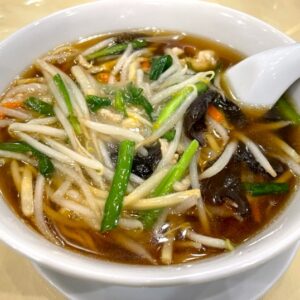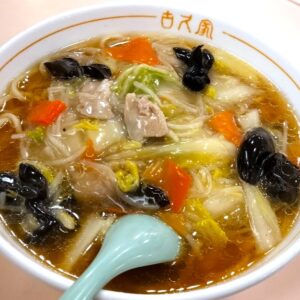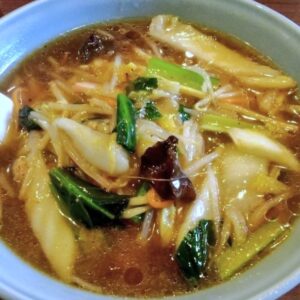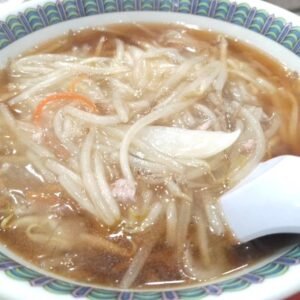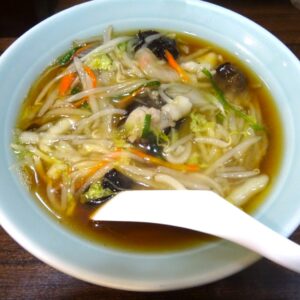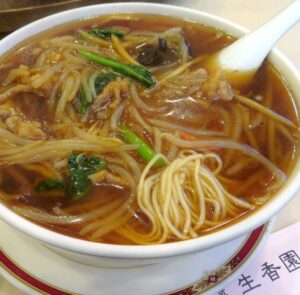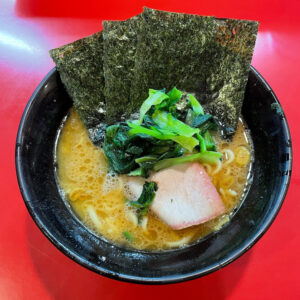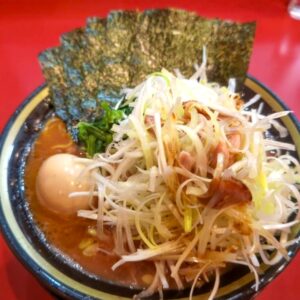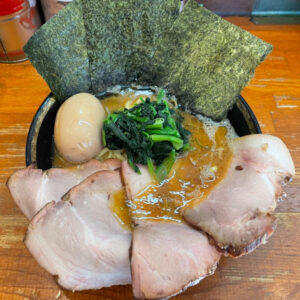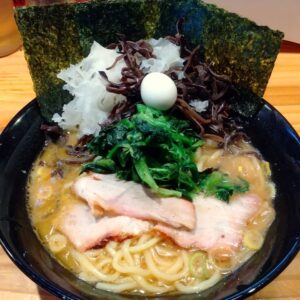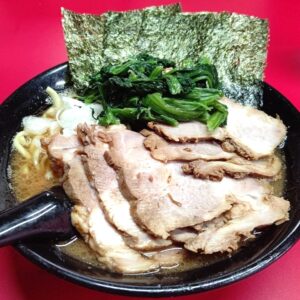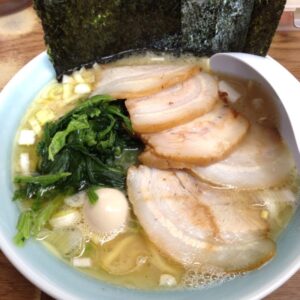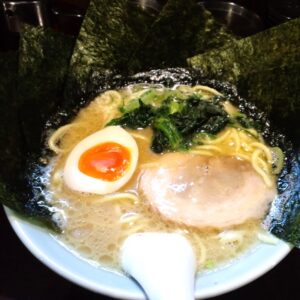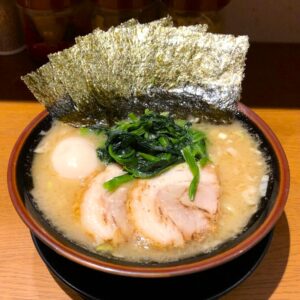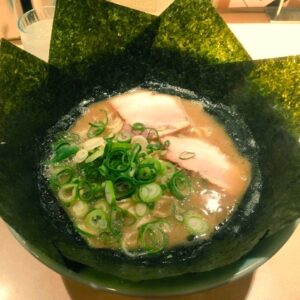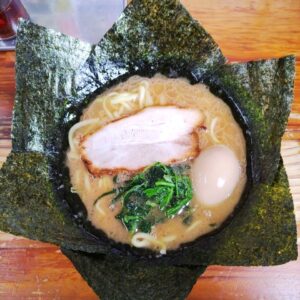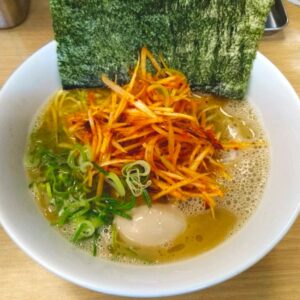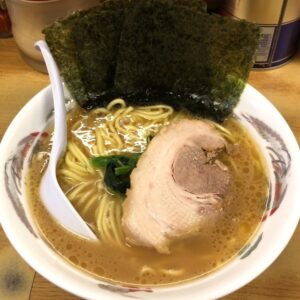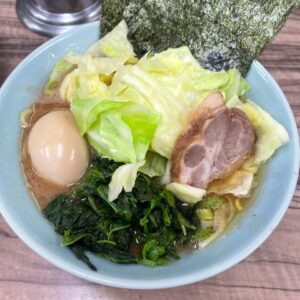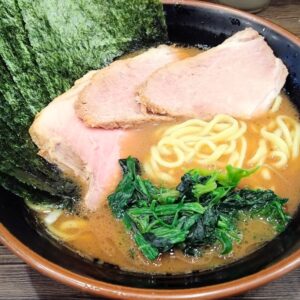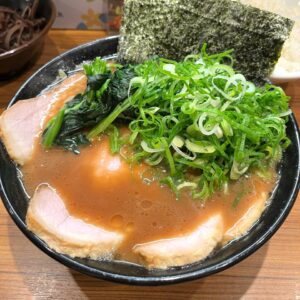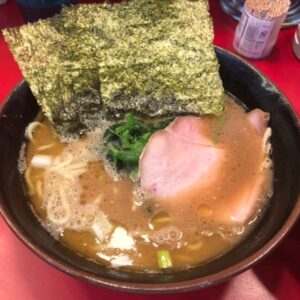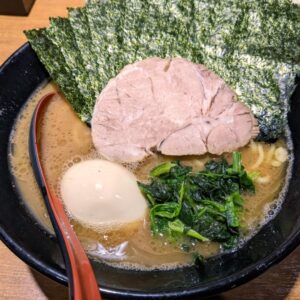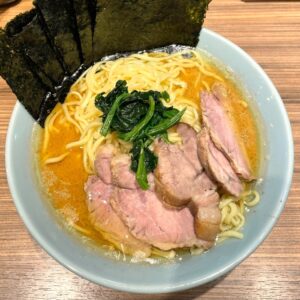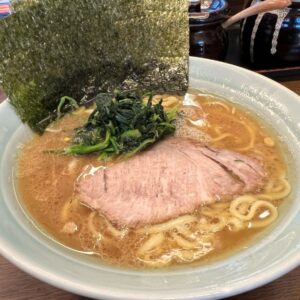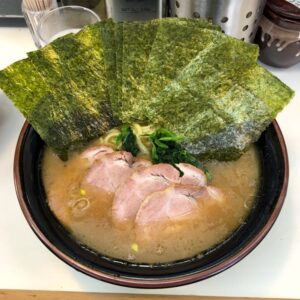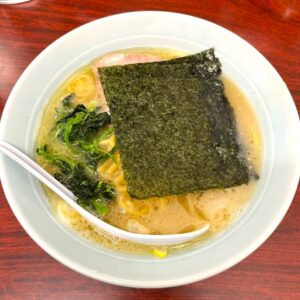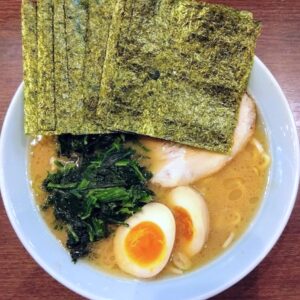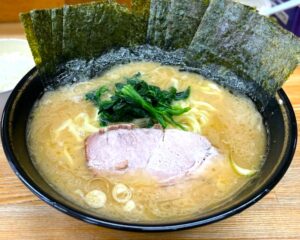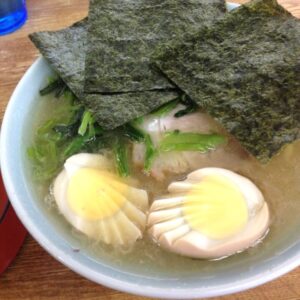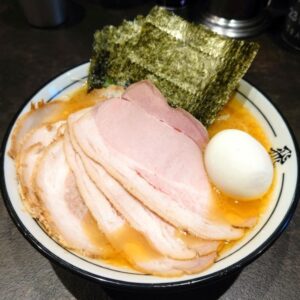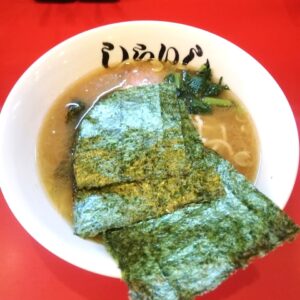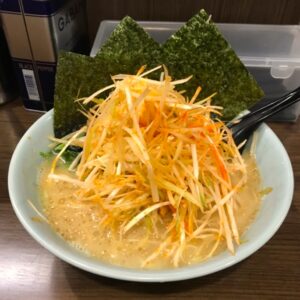Yokohama Ramen (Kanagawa Pref.)
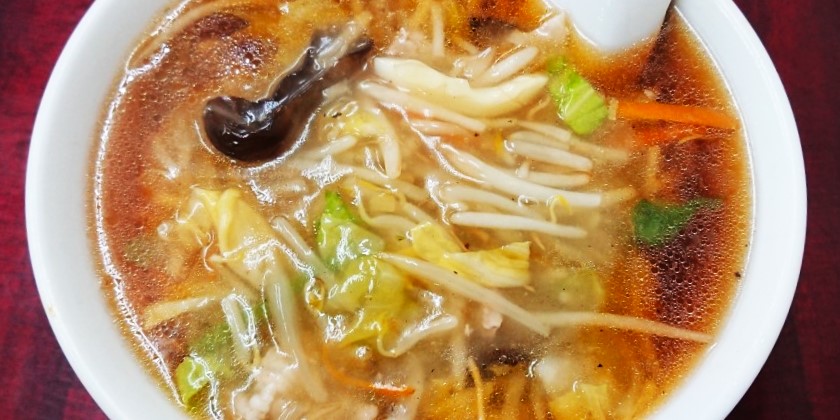
“Sanmāmen noodles” as local spot ramen and “Iekei Ramen” that has spread across the country
What is Sanmāmen(サンマー麺) noodles?
Sanmāmen, sanmaamen,(サンマー麺/サンマーメン/さんまーめん) is written in kanji; Chinese characters as “生碼麺”, “生馬麺”, and “三碼麺”. It has nothing to do with saury(秋刀魚,さんま,Sanma fish). In Cantonese, it means “生” (fresh, crunchy ingredients) and “馬” (on top) noodles. It originated in Yokohama’s Chinatown before the war, and its prototype is said to be the thick meat noodles that was a staff meal at Chinese shops at the time, and it became established as a menu item after the war. Sanmāmen noodles are basically made with thin noodles flavored with salt or soy sauce, and stir-fried colorful ingredients such as bean sprouts, pork, wood ear mushrooms, Chinese cabbage, carrots, and leafy vegetables, and covered with flavored paste.
Examples of representative shops selling Sanmāmen noodles
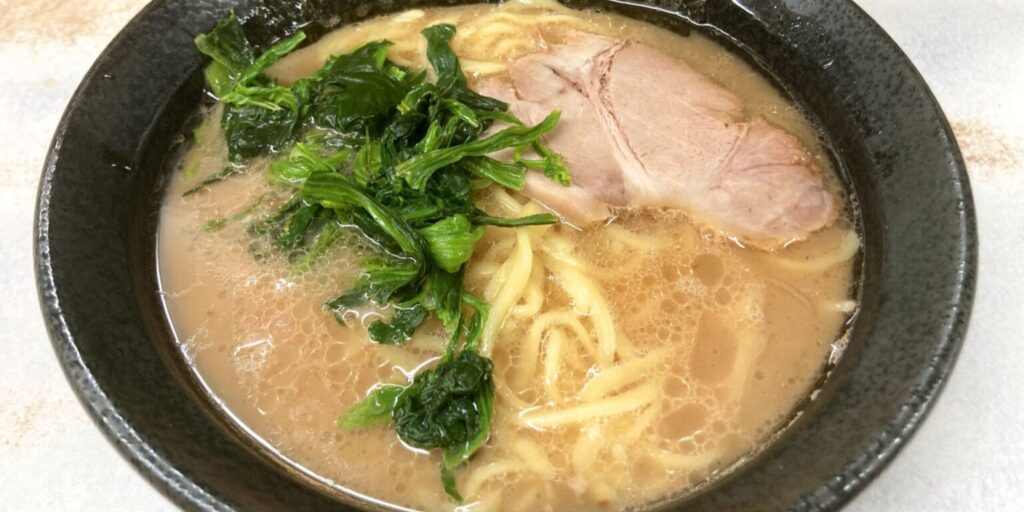
What is Iekei Ramen(家系ラーメン)?
Originated in 1974 by Yoshimuraya in Yokohama City, Kanagawa Prefecture, this ramen has a pork bone soy sauce-based soup and thick, straight noodles. The ramen and the group of ramen shops that have these characteristics are called Yokohama Iekei or Iekei(横浜家系/家系). Many shops allow customers to adjust the elements that make up their ramen, such as the strength of the flavor, the amount of fat, and the degree of boiling of the noodles, to suit their taste and eating style. There are many branch shops and businesses (capital type) that operate multiple stores.
Transforming from refreshing soy sauce taste to “Iekei” thick taste
Yokohama is also the city where Chinese food first arrived. Therefore, I can imagine that ramen was also the first. Straight noodles in clear soup for Chinese cuisine. This is the original Yokohama ramen. Gyokusen-tei(玉泉亭) is a long-established restaurant that was founded in 1918, but it still offers a nostalgic taste. Another type of local spot ramen is “Sanmāmen,” which is made with thickened sauce vegetables (mainly bean sprouts) as toppings.
However, now, when we talk about “Yokohama ramen,” we are referring to ramen called Iekei. The main headquarters is Yoshimuraya(吉村家), which was founded by Minoru Yoshimura(吉村 実) in Shin-Sugita in 1974 (currently relocated near Yokohama Station). Minoru Yoshimura, who was a long-distance truck driver at the time, took on the challenge to the ramen industry by developing a soup that combined Kyushu’s tonkotsu(pork bone) base and Tokyo’s soy sauce base, which he had been secretly researching as a hobby. So to speak, it’s “quit the company worker ramen.”
The basic shape is straight, short, extra-thick noodles. It is a combination of a rich soy sauce-flavored soup made with large amounts of pork bones and chicken bones, and a large piece of seaweed. Eaters can choose how well the noodles are boiled, the amount of fat, and the intensity of the flavor. Although it has a long history, it has increased in the past few years, and there are said to be between 250 and 300 stores nationwide, and the number continues to grow (even more, if you include all multi-store chain and FC operations).
Main Iekei ramen shops directly lined from the Yoshimuraya
-
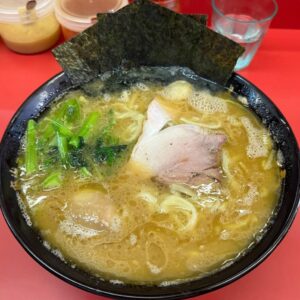
-
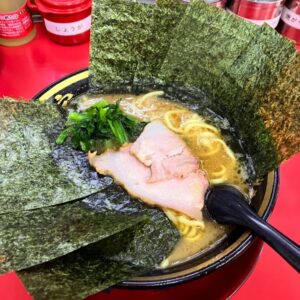
-
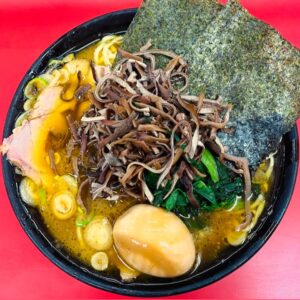
-
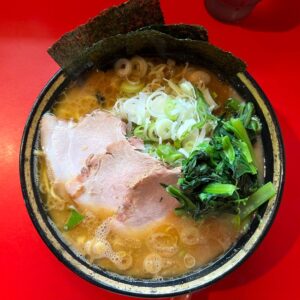
Atsugi-ya (厚木家/Tsumada Higashi, Atsugi City, Kanagawa Pref.)
-
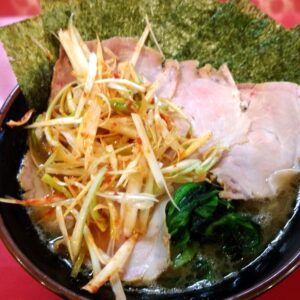
Takamatsu-ya (高松家/Yashima Nishimachi, Takamatsu City, Kagawa Pref.)
-
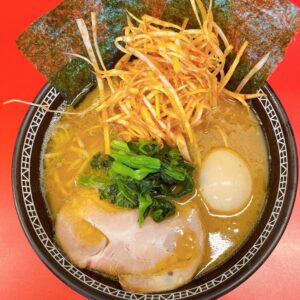
As of December 2023
Examples of other major Iekei ramen shops
“Ichiroku-ya(壱六家),” which was founded in 1992, is a separate lineage that has produced many other students, including “Matsuichi-ya(松壱家),” “Ippachi-ya(壱八家),” and “Machida Shoten(町田商店).”
In addition, many members of the “Musashi-ya(武蔵家),” which descended from the “Takasago-ya(たかさご家),” are active, including “Budo-ka(武道家),” “Kido-ya(輝道家),” “Tanise-ya(谷瀬家),” and “Menya Kuro(麺屋 黒).”
Ichi lineage(壱系)
Franchise development
Takasago-ya lineage
Examples of other typical Iekei ramen shops
With the trend of the Iekei boom, the number of shops that called themselves “Iekei” without having trained at these mainstream shops increased, and we ushered in the Iekei war period. Companies that have noticed this boom have started opening multiple Iekei ramen shops. In response to this trend, shops that do not add “ie(家)” to their shop names or even don’t even call themselves “Iekei(家系)” have begun to appear. In a sense, this is also the establishment of “Iekei,” and its penetration throughout the country. In the end, this “tonkotsu(pork bone) soy sauce flavor” is a flavor that is accepted by many people and is increasing in popularity across the country.
What are the characteristics of “Iekei Ramen”? In the past, the most distinctive feature of the store was that it had the word “ie” in its name, but recently more and more shops are not adding that name. The soup is a type of ramen made with mainly pork bones and chicken bones, and a strong soy sauce sauce. Even during business hours, gala(bones) are being replaced and added to, and there are many people who don’t like the way they look.
It is important that the oil is chicken oil (Chi-yu/鶏油). The idea of combining chicken oil with a pork bone-based soup (although chicken bones are also used) is unique. Their main feature is that they are medium-thick, straight noodles that are shorter than regular ramen noodles. Many of the noodles are made by Sakai Seimen (酒井製麺/a noodle factory), and in the past, you could tell whether a shop was mainstream or not, by they used noodles from this place.
The ingredients are chashu, spinach, and seaweed. Another feature is that there is no menma bamboo shoots. Another great feature is that you can choose how the noodles are boiled (hard, medium, soft), the strength of the sauce (strong, medium, light), and the amount of oil (much, normal, little). There are also many seasonings available, so you can customize the style to your liking.
Examples: grated garlic, ginger, spicy bean sauce, vinegar, pepper, ground sesame seeds.
Most shops have rice available, and some offer it for free. Many people eat this as a mini-bowl by adding seaweed or chashu soaked in the soup. In the past, most chashu pork was boiled pork, but recently many shops have grilled pork. “Ichikei(壱系/Ichi lineage)” has quail eggs and a salty taste, which are its main characteristics and uniqueness.
Example of an Iekei ramen shop group with multiple shops
There are many groups that are rooted in local communities and have opened many chains in front of train stations and along national highways, and the momentum with which they are opening shops suggests the popularity of a style called “Iekei”.
-

-

Machida Shoten (町田商店/ 132 shops / 壱系 Ichi lineage) Machida Shoten Main Shop(町田商店 本店)
-
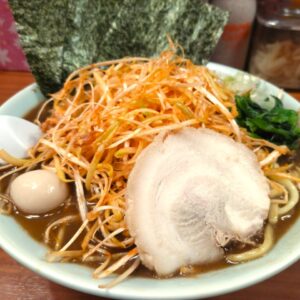
Konshin-ya (魂心家/ 50 shops / 壱系 Ichi lineage) Meguro Konshinya(目黒魂心家)
-
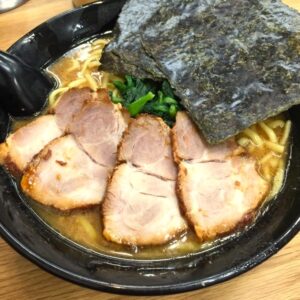
-
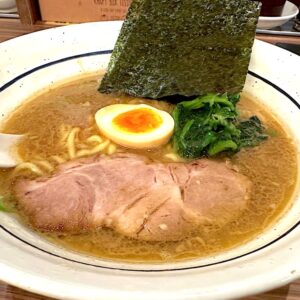
-
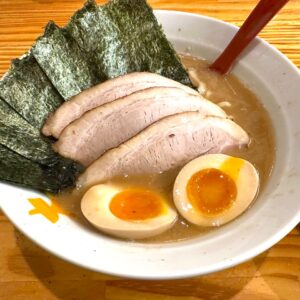
-
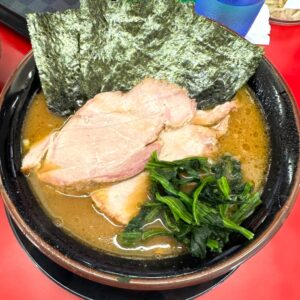
Oudou-ya (王道家/ 10 shops/Yoshimura-ya independent) Iekei Ramen Oudou-ya(家系ラーメン 王道家)
As of December 2023
Anyway, popular Iekei ramen. For information on shops and lineage, please refer to the link below from Yokohama Information Media “Hamarepo”.
*Please note that this is not an all-inclusive list. https://hamarepo.com/iekei_kakeizu/


